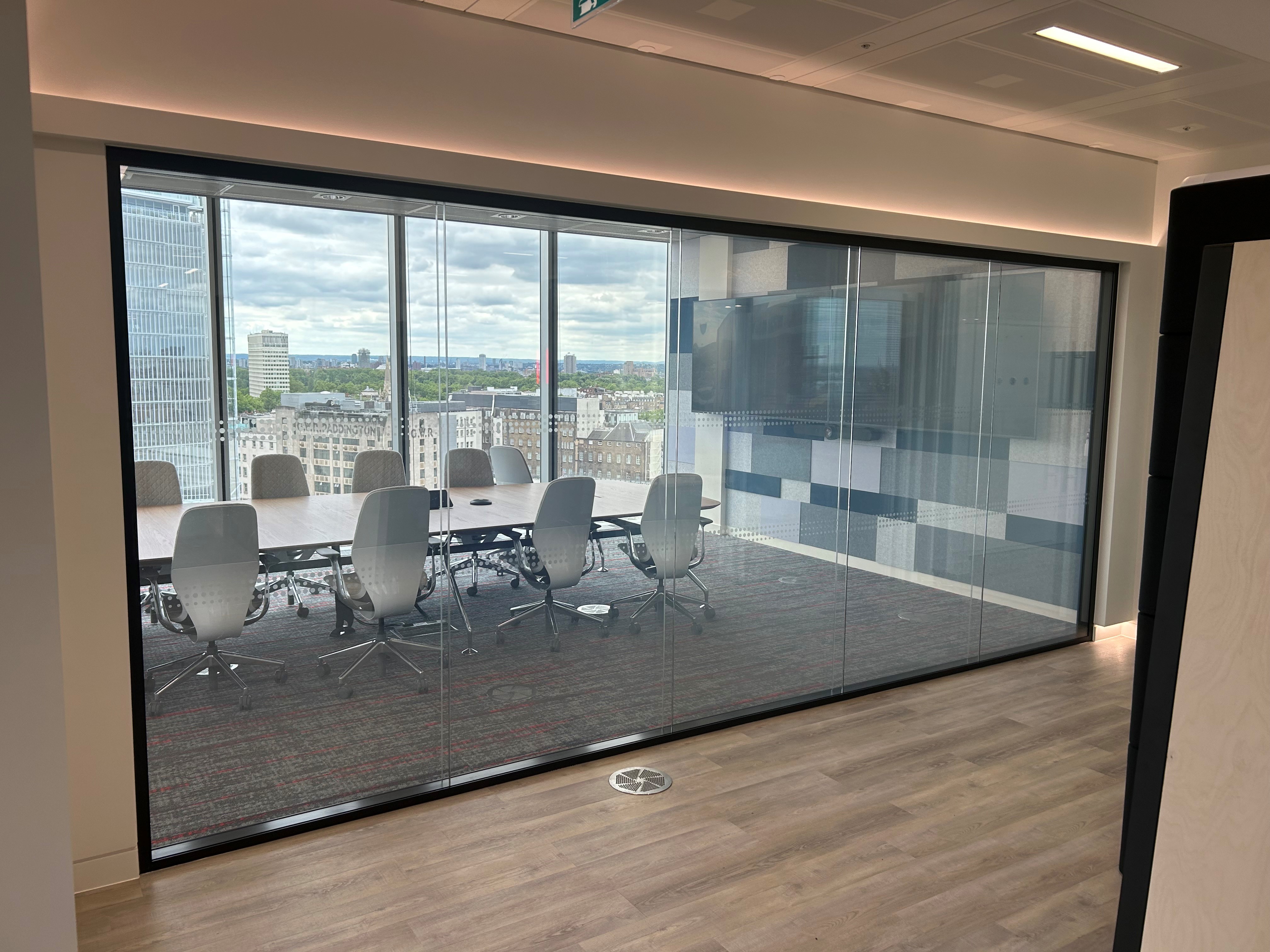
With a focus on creating workspaces that promote health, wellbeing and productivity, office architecture and design has transformed in recent years.
An emphasis has been placed on integrating nature into a space using biophilic design; a method seeking to incorporate natural elements into the building to create a harmonious blend of the environment and technology.
An essential element in achieving this integration is the use of acoustic glazed partitions, which provide both functional benefits and compliment biophilic design.
Understanding Biophilic Office Design
Biophilic design is centred around the idea that we have an innate connection with nature, and integrating such elements into indoor spaces can enhance our overall sense of wellbeing and satisfaction.
According to Bill Browning, Terrapin Bright Green’s founding partner and environmental strategist, incorporating natural light and indoor plants in the design can have a profound impact on our mood.
“Biophilic experiences can reduce stress, improve cognitive function and enhance mood and creativity. These and other outcomes can increase health and wellbeing, as well as productivity.”
And a study conducted by the University of Exeter supports this. The research highlighted how productivity in the office increased by almost 20% when biophilia was accommodated in the design of the office.
Dr Craig Knight, who spearheaded the research, said:
“The improvement in productivity from placing plants near to staff was remarkable.”
The Role of Acoustic Glazed Partitions
Acoustic glazed partitions work perfectly with biophilic design, addressing both the need for privacy and acoustic control while allowing the benefits of natural light and visual connectivity to flourish. Here, we discuss these benefits in greater detail.
1. Natural Light Enhancement
Acoustic glazed partitions are designed to let natural light flood into the workspace, reducing the need for artificial lighting during daylight hours.
This not only saves energy but also promotes a healthier circadian rhythm among employees, enhancing their overall well-being and productivity.

Alan Hedge, a professor in the Department of Design and Environmental Analysis at Cornell University, conducted a study to prove this theory.
“The study found that optimising the amount of natural light in an office significantly improves health and wellness among workers, leading to gains in productivity.”
2. Visual Connectivity
By utilising transparent or frosted glass panels, acoustic glazed partitions allow employees to maintain visual connections with other parts of the office.
This design feature fosters a sense of unity and connectivity, promoting teamwork and collaboration even across different functional zones.
Payette Interior Designer, Mary Gallagher, echoes this sentiment.
“Today, connectivity in the workplace goes beyond technology advances and includes the need for collaborative spaces to encourage teamwork and socialisation.”
3. A View to the Outdoors:
Well-designed acoustic glazed partitions can offer visual access to outdoor views, enabling employees to experience the changing seasons and natural landscapes.
This connection to the outdoors helps reduce stress levels and contributes to a calmer, more productive work environment.

Hedge’s study emphasises this point, with the findings showing a 10% decrease in employee “drowsiness” when provided with a view to the outside and natural light.
4. Flexibility and Adaptability:
The modular nature of acoustic glazed partitions allows for flexible space configuration.
As the needs of the office evolve, our partitions can be easily reconfigured or relocated to accommodate changing layouts and team sizes.
5. Acoustic Control
While promoting visual and spatial connections, acoustic glazed partitions effectively address the issue of noise control.
They help create semi-private spaces within an open office environment, allowing for focused work and private conversations without disturbing others.
An individual’s level of focus can drop by a staggering 66% from overhearing a conversation in the office, highlighting the importance of including acoustic glazed partitions in biophilic design.
Conclusion
The combination of acoustic glazed partitions and biophilic design principles creates a workspace that not only prioritises functionality, but also emphasises the well-being of employees.
These partitions seamlessly blend privacy, openness, noise control and natural light, and provide a canvas for architects to integrate seamlessly with biophilic design.
Related articles

Embodied Carbon in Glazed Partitions



